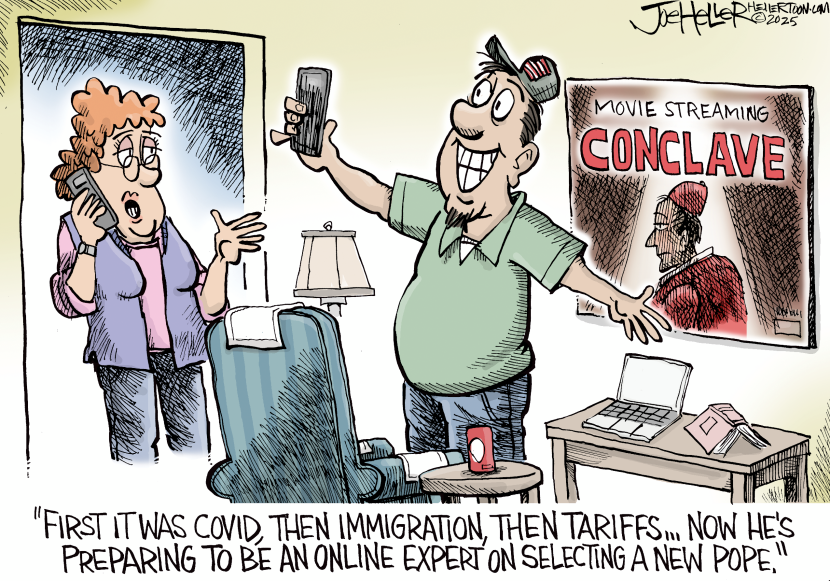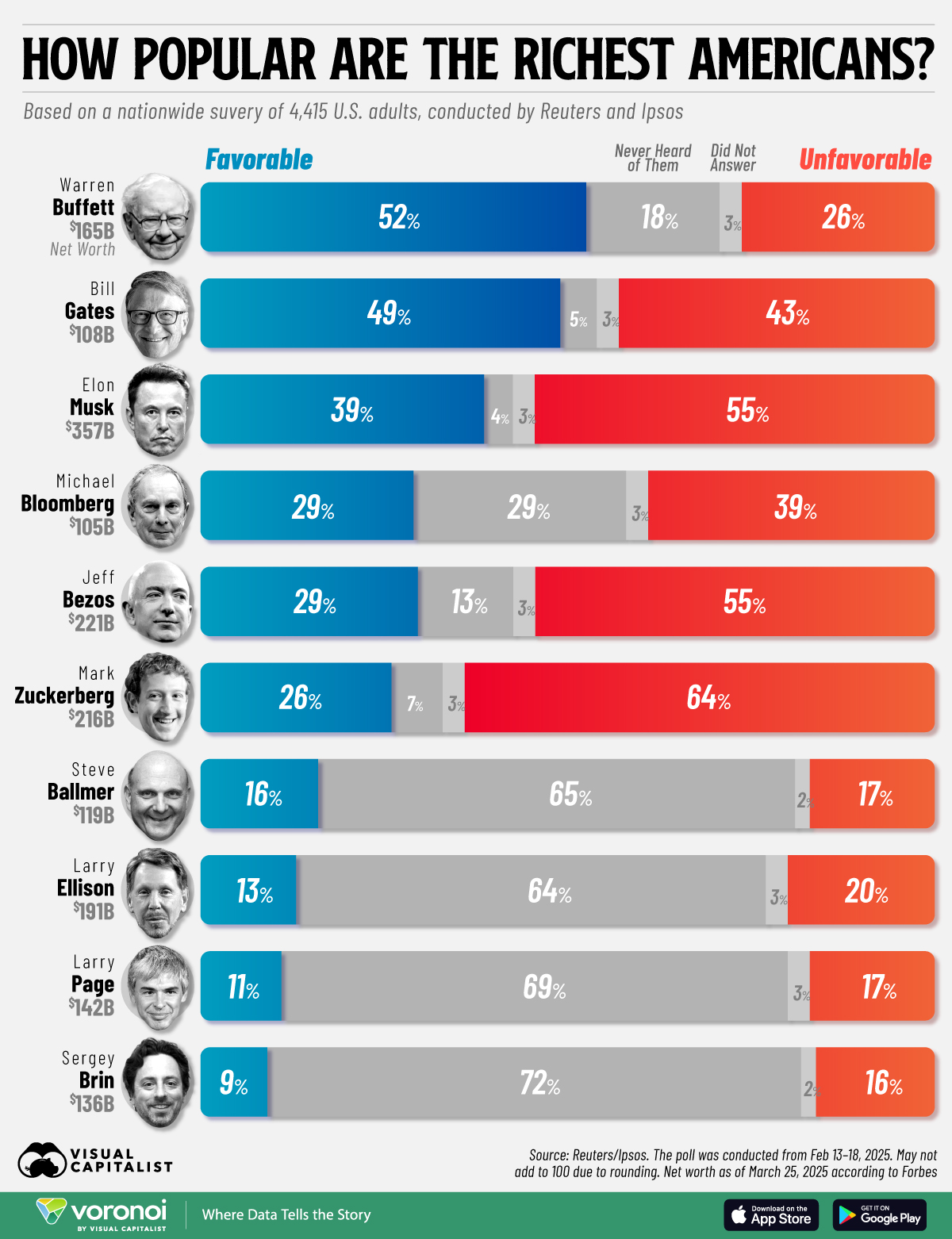
Here are some of the posts that caught my eye recently. Hope you find something interesting.
Lighter Links:
Trading Links:
« March 2025 | Main | May 2025 »

Here are some of the posts that caught my eye recently. Hope you find something interesting.
Lighter Links:
Trading Links:
Posted at 10:00 PM | Permalink | Comments (0)
In an era of economic uncertainty, few visualizations have captured the attention of economists, policymakers, and everyday consumers like the “Chart of the Century” created and named by Mark Perry, an economics professor and AEI scholar. This chart tracks the dramatic shifts in consumer prices across various sectors of the American economy over a quarter-century, revealing patterns that challenge conventional wisdom about inflation, purchasing power, and economic well-being.
The most current version reports price increases from 2000 through the end of 2024 for 14 categories of goods and services, along with the average wage and overall Consumer Price Index. Here are the key findings.
Core Economic Metrics: The Big Picture
|
Metric
|
Change
(2000-2024) |
|---|---|
|
Consumer Price Index (CPI)
|
+90%
|
|
Average Hourly Income
|
+123.3%
|
|
Real Purchasing Power
|
+16.1%
|
Meanwhile, the cost of hospital stays, childcare, and college tuition, to name a few, have surged. Why? These sectors share important characteristics: they are typically non-tradable services (cannot be imported), operate in markets with limited competition, and are often subject to extensive regulation.
Below is Perry’s Chart of the Century. To help you interpret it better, lines above the overall inflation line have become functionally more expensive over time, and lines below the overall inflation line have become functionally less expensive.
via Human Progress
For context, at the beginning of 2020, food, beverages, and housing were in line with inflation. They’ve now skyrocketed above inflation, which helps to explain the unease many households are feeling right now. College tuition and hospital services also have continued to rise relative to inflation over the past few years.
Market Dynamics: Understanding the Divergence
Looking at the prices that decrease the most, they’re all technologies. New technologies almost always become less expensive as we optimize manufacturing, components become cheaper, and competition increases. According to VisualCapitalist, at the turn of the century, a flat-screen TV would cost around 17% of the median income ($42,148). Since then, though, prices fell quickly. Today, a new TV typically costs less than 1% of the U.S. median income ($54,132).
We should also consider the larger trends. For example, In 2020, I asked what Coronavirus would do to prices ... and the answer turned out to be way less than expected. If you don’t look at the rise in inflation but instead the change in trajectories, very few categories were heavily affected. While hospital services have increased significantly since 2019, they were already rising. There were some immediate impacts, but they went away relatively quickly.
Another thing to consider is average hourly income. Since 2000, overall inflation has increased by 87.3%, while average hourly income has increased by 123.3%. This means that hourly income increased 38% faster than prices (which indicates a 16.1% decrease in overall time prices). You get 19.2% more today for the same amount of time worked ~24 years ago. This represents a mild increase in abundance since last year.
via Human Progress
Although 10 of the 14 items rose in nominal prices over the past 24 years, only five had a higher time price when accounting for the 123.3 percent increase in hourly wages. Those items were medical care services, childcare and nursery school, college textbooks, college tuition and fees, and hospital services.
The Consumer Experience: Perception vs. Reality
It’s interesting to look at data like that, knowing that the average household is feeling a “crunch” right now.
My guess is that few consumers distinguish between perception and reality. However, feeling a crunch isn’t necessarily the same as being in a crunch.
A clear pattern emerges when examining the relationship between market structures and price trends.
Regulated Markets (like healthcare and education) tend toward higher prices over time, feature less price competition, and offer limited consumer choice.
Free Markets, show price decreases over time, feature greater competition, and provide consumers more options.
This pattern raises important questions about the role of regulation in various economic sectors and the balance between consumer protection and market efficiency.
With that in mind, how can policymakers address sectors experiencing significant price hikes, such as healthcare and education, without stifling innovation in tradable goods and services?
Future Outlook
Beyond all that, here are three other key trends to watch.
As we continue to innovate and policy changes, it will be interesting to see if we can make essential services as dynamically competitive as consumer electronics. While America is one of the best countries in the world in countless ways, we do lag behind several countries in healthcare and education.
Posted at 09:57 PM in Business, Current Affairs, Food and Drink, Gadgets, Games, Ideas, Market Commentary, Science, Trading Tools, Web/Tech | Permalink | Comments (0)
So, if the math says it's likely that there are aliens ... why don't we see them?
In 2020, I mentioned Israeli officials who claimed they had been contacted by Aliens from a Galactic Federation - and that not only is our government aware of this, but they are working together.
There are many stories (or theories) about how we have encountered aliens before and just kept them secret. Here are some links to things you might find interesting if you want to learn more about this.
So, while some may still believe aliens don't exist - I think it's a more helpful thought experiment to wonder why we haven't seen them.
For example, the Fermi Paradox considers the apparent contradiction between the lack of evidence for extraterrestrial civilizations and the various high-probability estimates for their existence.
To simplify the issue, billions of stars in the Milky Way galaxy (which is only one of many galaxies) are similar to our Sun. Consequently, there must be some probability that some of them will have Earth-like planets. It isn't hard to conceive that some of those planets should be older than ours, and thus some fraction should be more technologically advanced than us. Even if you assume they're only looking at evolutions of our current technologies, interstellar travel isn't absurd.
Thus, based on the law of really large numbers (both in terms of the number of planets and length of time we are talking about) ... it makes the silence all the more deafening and curious.
If you are interested in the topic "Where are all the aliens?" Stephen Webb, a particle physicist, tackles that in his book and this TED Talk.
via TED
In the TED talk, Stephen Webb covers a couple of key factors necessary for communicative space-faring life.
But he also acknowledges the numerous confounding variables, including things like imperialism, war, bioterrorism, fear, the moon's effect on climate, etc.
Essentially, his thesis is that there are numerous roadblocks to intelligent life, and it's entirely possible we are the only planet that has gotten past those roadblocks. Even if there were others, it's entirely possible that they're extinct by now.
What do you think?
Here are some other links I liked on this topic. There is some interesting stuff you don't have to be a rocket scientist to understand or enjoy.
To Infinity and Beyond!
Posted at 09:13 PM in Business, Current Affairs, Film, Gadgets, Healthy Lifestyle, Ideas, Just for Fun, Market Commentary, Movies, Personal Development, Religion, Science, Trading, Travel, Web/Tech | Permalink | Comments (0)

Here are some of the posts that caught my eye recently. Hope you find something interesting.
Lighter Links:
Trading Links:
Posted at 06:17 PM in Business, Current Affairs, Gadgets, Healthy Lifestyle, Ideas, Just for Fun, Market Commentary, Music, Personal Development, Religion, Science, Trading, Trading Tools, Web/Tech | Permalink | Comments (0)
Last week, Astronomers announced the discovery of the most promising "hints" of life on an exoplanet, K2-18, 124 light years away.
While it would only be signs of phytoplankton and other microscopic marine life, it would still be a massive finding.
I tend to read a lot across a wide variety of sources. Recently, I've noticed a significant uptick in stories about aliens, UFOs, non-human intelligence, and non-human technology. In addition, several of my seemingly sane friends claim to have direct knowledge of projects and groups (funded by well-known billionaires) close to making very public announcements about missions, research, and discoveries in these areas, they hope will result in discontiguous innovations and asymmetric capabilities.

While I believe it's naive to assume that there's no other form of life in a universe as vast as what we understand ... I'm also highly skeptical of anyone who claims that they have specific knowledge or proof. With that said, I have seen enough stuff from people I trust to expect that our beliefs about these issues will shift massively in the very near future. As an example, check out Skywatch.ai, some of its videos, or this NewsNation broadcast.
Since we live in a time where technologies are rapidly advancing, I thought it might be interesting to test out an AI-powered chatbot designed to debunk conspiracy theories through evidence-based conversations. It is a spin-out project with roots at MIT and other top universities. Research shows that many people doubted or abandoned false beliefs after a short conversation with the DebunkBot.
I first heard of this tool through these two articles: Meet DebunkBot, The AI Chatbot that Will Debunk Any Conspiracies You Believe and AI Chatbot Shows Promise in Talking People Out of Conspiracy Theories.
Here is a link to the conversation I had with it about the belief "Life likely exists elsewhere in the Universe due to its vastness and the repeated conditions that can give rise to life." To my surprise, this tool concluded that the belief is not a conspiracy theory and reminded me that:
Science for the sake of knowing is one thing. Belief for the sake of hope, curiosity, or imagination is another. The search for "life" might actually help us discover something more valuable than what we thought we were searching for in the first place.
You can test your beliefs against DebunkBot's AI. Let me know how it goes and whether you changed your mind.
Meanwhile, Information Is Beautiful has an interactive data visualization to help you decide if we're alone in the Universe.
As usual, it's well done, fun, and informative.
For the slightly geeky amongst us, the model lets you adjust the estimate by playing with the Drake and Seager equations.
The Drake equation estimates the number of detectable extraterrestrial civilizations in our galaxy and the universe. It factors in variables such as habitable planets, the likelihood of life, intelligent life, and the duration of time a civilization sends signals into space.
The Seager equation is a modern take on the equation, focusing on bio-signatures of life that we can currently detect - for example, the number of observable stars/planets, the % have life, and the % chance of detectable bio-signature gas.
Click here to play with the Are We Alone in the Universe infographic.
For both equations, the infographic lets you look at various default options, but also enables you to change the variables based on your beliefs.
For example, the skeptic's default answer for Drake's equation shows 0.0000062 communicating civilizations in our galaxy, which is still 924,000 in the universe. The equivalent for Seager's equation shows 0.0009000 planets with detectable life in our "galactic neighborhood" and 135,000,000 planets in our universe.
Even with the "lowest possible" selection chosen, Drake's equation still shows 42 communicating civilizations (Douglas Adams, anyone?) in the universe.
One of the most interesting numbers (and potentially influential numbers for me) is the length of time a civilization sends signals into space. Conservative estimates are 420 years, but optimistic estimates are 10,000 or more.
One other thing to consider is that some scientists believe that life is most likely to grow on planets with very high gravity, which would also make escaping their atmosphere for space travel nigh impossible.
If any aliens are reading this ... don't worry, I won't tell. But we will find out who you voted for in the last election.
Posted at 06:14 PM in Business, Current Affairs, Food and Drink, Gadgets, Ideas, Just for Fun, Market Commentary, Personal Development, Religion, Science, Trading, Web/Tech | Permalink | Comments (0)
I have always valued masterminds for introducing me to new ideas, fresh perspectives, and individuals with diverse backgrounds and experiences.
For as long as I can remember, my calendar has been filled with the spaced repetition of a multitude of events. I am a fan of the rhythm of conferences, which gets you out of the office and away from day-to-day activities, gives you a chance to think about what you really want, and (perhaps most importantly) shifts what you believe is possible.
I also enjoy the intensity of live events and being in a “solution space” for concentrated periods of time.
In addition, I believe that a “different perspective” is an important part of creating extraordinary things.
Looking back, I got productive things done and benefitted from innovative new mutations that wouldn't have happened except by being outside of my default path (the rut that tricks us into feeling like we're thinking, even though we're simply running habitual processes on habitual stimuli that produce okay, but predictable, results).
The truth is that I liked and valued all the groups I attended regularly. Even if there was an event that didn't meet my expectations, the benefits and value I got from those groups made them easily worth the cost of attending (not only in terms of money … but also in time, time away from other things I cared about, and the lost opportunity cost of not being able to do other things while I was doing those things).
Nonetheless, as an experiment, I decided to stop going to Masterminds last year. I even called it a “Sabbatical”
The Power of Conscious Choice.
Here are a few of the reasons I made that decision.
To start, I wasn’t looking forward to going to events anymore … and often felt overwhelmed or constrained by my schedule.
Sometimes, less is more.
I've flown over 6 million actual butt-in-seat airline miles and averaged between 150 and 250 flights a year for decades.
However, upon reflection, even though most of what I was doing was stuff I started because I liked the community or the thought process … my schedule had become almost a habit, ritual, or superstition – rather than a choice.
And I wasn't thinking about the opportunity cost of going to these events anymore.
How Do You Figure Out What to Keep and What to Abandon?
When I talk to entrepreneurs about their businesses, part of my assessment process is to look at their teams and determine if there are weak performers or people who otherwise shouldn't be there. For example, people that may be high-performing but are bad for the culture. Even in great companies, there are a couple of people like that. But for the most part, high-performing teams have high-performing team members. And because the leaders don't want to lose capability, they leave things the way they are.
Perspective matters.
Instead of asking, “Who am I willing to cut? Try the opposite. Ask, “If I were in a boat and it capsized, who's the first person I would try to save?” Then ask yourself, “Why?”
The same technique works with product lines and time commitments.
So, last year, I decided not to attend any event unless I was speaking. Why? Because I wanted to free my time and take a break …. and I figured it would create a force function to highlight the things I felt compelled to add back faster than the year I gave myself.
I thought of it as an energy-based meritocracy.
However, a strange thing happened. For the most part, I haven’t missed anything enough to pull it back into the boat.
That doesn't mean that I don't miss some of the groups or people from time to time – and it certainly doesn't mean that I didn't find them valuable … But, there's a time and a place for everything (and it isn’t the Season for those things, for me, right now).
I'm spending my time and focus working on a different set of things right now that need intensity and priority.
There Is an Exception to Every Rule
Meanwhile, I started attending some personal development and coaching programs from Brendan Burchard this year. Part of my rationale was that I believed the content would help me deal with some significant issues I'm dealing with (or foresee dealing with).
I sense huge upside potential … as long as I'm in the right place in terms of mind, body, spirit, and strategy.
I already have so many tools in my toolbox that time away from certain other programs doesn't really deprive me of tools that I use regularly.
I saw the clearing as an opportunity to add a new set of tools and a different perspective that I hoped would kickstart other things.
The Decision to Attend a High-Intensity Conference
I've been on a hard sprint towards some massive goals. It's been exhausting on many levels.
The idea of a four-day, high-intensity conference that involved thinking, feeling, connection, communication, questions, focus, attention, and participation felt overwhelming.
I had to leave Dallas early in the afternoon to get to the conference destination in time to get a good night's sleep, which was important because I had to be prepared for the 7.30 a.m. start time and the 12-plus hours of events every day.
When it came time to leave for the event, I didn't want to go.
The truth is, I really didn't want to go.
But a part of me also realizes that a professional stands and delivers when it's time to stand and deliver.
Staying Home vs Going Out
I know that almost any time I've been in a situation like this, after going to the event, I call my assistant, wife, or somebody on the team and say, “Wow, I'm really glad I went. Clearly, I was supposed to be here. I met this person ... or it reminded me of something that I've always known, but for some reason I haven't been applying ... or I got this new perspective that really makes sense, which I think will make this other thing easier.”
I came up with a phrase to describe that feeling: “Good things happen when I'm in motion!”
Too often, when you're under stress, your self-preservation instinct is to find a quiet place to isolate yourself and wait for the storm to pass. But that’s not what you really need.
So, when I was going to miss the event, everyone basically said the same things to me …
"You should reconsider because good things happen when you're in motion. And, remember, you always tell me that you were supposed to be there when you get back."
There and Back Again
Now that I've finished the conference, I'm dictating this in the car on my way back from the event.
Once again, I feel silly for thinking about not going.
It's one thing to know what you know, but it's another not to know what you don't know. Sometimes, you can't imagine what you're going to get when what you're trying to get is something that's hard to imagine.
I encourage you all to think about:
So, make time for things that make extraordinary things more likely.
Just something to think about.
Don't get me wrong - while I've taken a brief sabbatical from events, I'm still a massive fan and plan on adding some back to my schedule. Precisely for the reasons mentioned in this article. But, it's not going to be because it's my routine, but because I'm being deliberate and intentional about where I spend my time.
Onwards!
Posted at 09:20 PM | Permalink | Comments (0)

Here are some of the posts that caught my eye recently. Hope you find something interesting.
Lighter Links:
Trading Links:
Posted at 09:13 PM | Permalink | Comments (0)
Next Sunday is Easter, but yesterday was the first night of Passover - an 8-day long Jewish holiday that recounts the story of Exodus.
The overlap can be seen in DaVinci's Last Supper, depicting a Passover Seder and Jesus's last meal before his crucifixion.

Part of the Passover Seder tradition involves discussing how to share the story in ways that connect with different types of people, recognizing that everyone understands and relates to things differently.
To do this, we examine the Passover story through the lens of four archetypal children — the Wise Child, the Wicked Child, the Simple Child, and the Child Who Does Not Know How to Ask.
The four children reflect different learning styles — intellectual (Wise), skeptical (Wicked), curious (Simple), and passive (Silent) — and highlight how we must adapt communication to the diverse personalities and developmental stages of our audience.
This seems even more relevant today, as we struggle to come to a consensus on what to believe and how to communicate with people who think differently.
On a lighter note, one of the memorable phrases from Exodus is when Moses says, "Let my people go!" For generations, people assumed he was talking to the Pharoah about his people's freedom. But after a week of eating clogging food like matzoh, matzoh balls, and even fried matzoh … for many Jews, "Let my people go" takes on a different meaning.
After Passover, and as we enter a new season, it's a great time for a mental and physical 'Spring Cleaning,' and delve into your experiences to cultivate more of what you desire and less of what you don't.
Here is to Spring, Re-Birth, and Spring Cleaning.
Hope you had a great weekend.
Posted at 04:52 PM in Art, Books, Current Affairs, Film, Food and Drink, Healthy Lifestyle, Ideas, Just for Fun, Movies, Personal Development, Religion, Writing | Permalink | Comments (0)
We live in an interesting time. Many billionaires aren’t just business leaders - they’re also influencers, personalities, and public figures.
While countless billionaires go under the radar, several of today’s billionaires have become controversial figures - like Elon Musk. So, how do the top 10 richest Americans rank in this so-called “popularity contest?”

via visualcapitalist
It’s interesting how many of the 10 wealthiest people in America are still flying relatively under the radar. In my head, names like Sergey Brin or Larry Page should still be household names.
On the other side of this scale, the three richest billionaires have primarily unfavorable ratings ... with Mark Zuckerburg being the most disliked of the bunch.
Meanwhile, Warren Buffett and Bill Gates have predominantly positive ratings - though Bill is more polarizing than Buffett.
As an aside, the world’s richest lost over $200 billion in a single day as news of Trump’s tariffs rocked markets. For context, that drop is the fourth-largest one-day decline in the Bloomberg Billionaires Index’s 13-year history.
Posted at 10:35 PM in Business, Current Affairs, Ideas, Just for Fun, Market Commentary, Trading, Trading Tools, Web/Tech | Permalink | Comments (0)
Are Your AI Fears Valid? What Experts Say
It's no surprise that there is often a disparity between what experts believe and what the average adult feels. It's even more pronounced in industries like AI that have been lambasted by science fiction and popular media.
Even just a few years ago, many of my advisors and friends told me to avoid using the term "AI" in our materials because they thought people would respond negatively to it. Back then, people expected AI to be artificial and clunky ... yet, somehow, it also reminded them of dystopian stories about AI Overlords and Terminators. An incompetent superpower is scary ... so is a competent superpower you can't trust!
As AI integrates more heavily into our everyday lives, people's hopes and concerns are intensifying... but should they be?
Pew Research Center surveyed over 5,000 adults and 1,000 experts about their concerns related to AI. The infographic shows the difference in concern those groups had regarding specific issues.
Statista via VisualCapitalist
The most common—and well-founded—fears center on misinformation and the misappropriation of information. Experts and the average adult are in alignment here.
I am consistently surprised by the lack of media literacy and skepticism demonstrated by otherwise intelligent people. Images and articles that scream "fake" or "AI" to me are shared virally and used to not only take advantage of the most susceptible but also to create dangerous echo chambers.
Remember how bad phishing e-mails used to be, and how many of our elderly or disabled ended up giving money to a fake Prince from various random countries? Even my mother, an Ivy League-educated lawyer, couldn't help but click on some of these e-mails. Meanwhile, the quality of these attacks has risen exponentially.
And we're seeing the same thing now with AI. Not only are people falling for images, videos, and audio, but you also have the potential for custom apps and AI avatars that are fully focused on exploitation.
AI Adoption Implications
Experts and the average adult have a significant disparity in beliefs about the long-term ramifications of AI adoption, such as potential isolation or job displacement.
I'm curious, how concerned are you that AI will lead to fewer connections between people or job loss?
I often say that technology adoption has very little to do with technology and much more to do with human nature.
That obviously includes AI adoption as well.
Career growth often means abandoning an old role to take on something new and better. It's about delegating, outsourcing, or automating tasks so you can free up time to work on things that matter more.
It may sound like a joke, but I don't believe most people will lose jobs to AI. Instead, they'll lose jobs to people who use AI better. The future of work will be about amplifying human intelligence ... making better decisions, and taking smarter actions. If your job is about doing those things – and you don't use AI to do them – you will fall behind, and there will be consequences.
It's the same way that technology overtook farming. Technology didn't put people out of work, but it did force people to work differently.
Innovation has always created opportunity and prosperity in the long term. Jobs may look different, and some roles may be phased out, but new jobs will take their place. Think of it as tasks being automated, not jobs.
Likewise, COVID is not why people have resisted returning to the office. COVID might have allowed them to work remotely in the first place, but their decision to resist going back to the office is a natural part of human nature.
When people found that technology enabled them to meet expectations without a commute, opportunities and possibilities expanded.
Some used the extra time to learn and grow, raising their expectations. Others used that time to rest or focus on other things. They're both choices, just with different consequences.
Choosing to Contract or Expand in the Age of AI
AI presents us with a similar inflection point. I could have easily used AI to write this article much faster, and it certainly would have been easier in the short term. But what are the consequences of that choice?
While outreach and engagement are important, the primary benefit of writing a piece like this, for me, is to take the time and to go through the exercise of thinking about these issues ... what they mean, what they make possible, and how that impacts my sense of the future. That wouldn't happen if I didn't do it.
I often say, "First bring order to chaos ... then wisdom comes from making finer distinctions." Doing work often entails embracing the chaos and making finer distinctions over time as you gain experience. With repetition, the quality of those results improves. As we increasingly rely on technology to do the work, to learn, and to grow, the technology learns and grows. If you fail to also learn and grow, it's not the technology's fault. It is a missed opportunity.
The same is true for connection. AI can help you connect better with yourself and others... or it can be another excuse to avoid connection.
You can now use an AI transcription service to record every word of an interaction, take notes, create a summary, and even highlight key insights. That sounds amazing! But far too many people become accustomed to the quality of that output and fail to think critically, make connections, or even read and process the information.
It could be argued that our society already has a connection problem (or an isolation epidemic), regardless of AI. Whether you blame it on social media, remote work, or COVID-19, for a long time, how we connect (and what we consider "connection") has been changing. However, many still have fulfilling lives despite the technology ... again, it's a choice. Do you use these vehicles to amplify your life, or are they a substitute and an excuse to justify failing to pursue connection in the real world?.
As said, actions have consequences ... and so do inactions.
I'm curious to hear your thoughts on these issues. Are you focused on the promise or the perils of AI?
Posted at 10:57 PM in Business, Current Affairs, Film, Gadgets, Healthy Lifestyle, Ideas, Market Commentary, Personal Development, Religion, Science, Trading Tools, Web/Tech | Permalink | Comments (0)
Reblog (0)